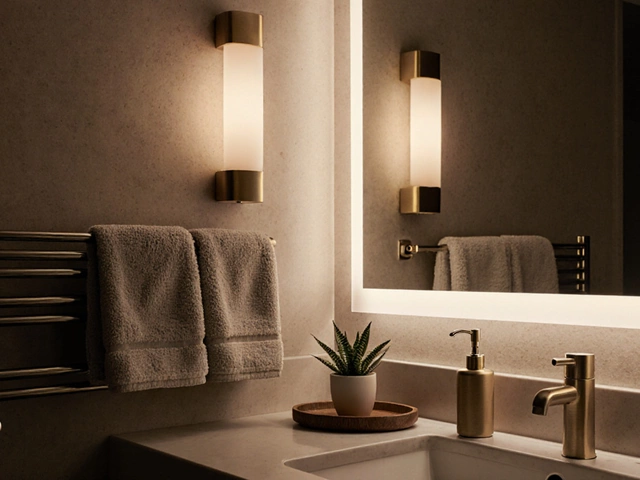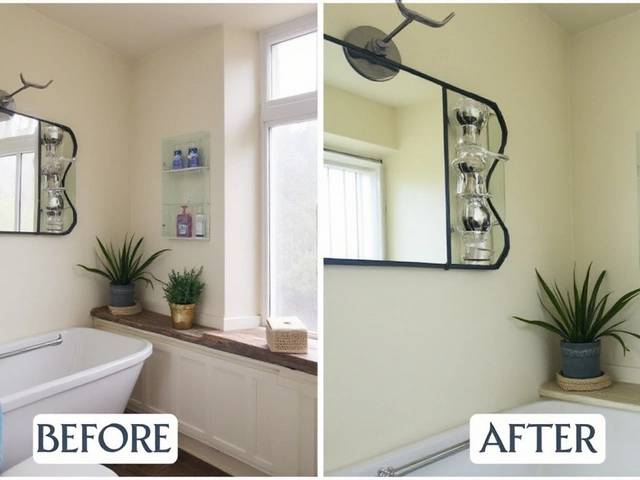So, you're wondering what 'bedding' really means in English? It's more than just tossing a few sheets on a mattress. Bedding covers everything that dresses your bed—from the fitted sheet up to that fancy throw blanket.
Let's break it down. Bedding includes sheets, pillowcases, comforters, duvet covers, and yes, even mattress protectors. It's all the stuff that makes your bed comfortable and stylish. Plus, it helps control the temperature while you sleep, meaning there's more to it than just aesthetics.
Ever thought about how your bedding might affect the quality of your snooze time? Your choice can mean the difference between waking up refreshed or feeling like you never went to bed at all. Quality materials and the right type for the season are key elements. And there's no shortage of options, whether you're into Egyptian cotton or prefer a hypoallergenic bamboo mix.
- What Does Bedding Include?
- History of Bedding
- Different Types of Bedding
- Choosing the Right Bedding
- Bedding Maintenance Tips
- Fun Facts About Bedding
What Does Bedding Include?
When we talk about bedding, we're covering a whole ensemble of items that turn your bed into a cozy retreat. Not just any soft stuff, each piece plays its part in making your sleep sanctuary awesome.
Let's check out what's usually part of a bedding set:
- Sheets: The base of any bedding set, including fitted sheets that snugly wrap around your mattress and flat sheets that lie between you and your blanket.
- Pillowcases: These are the covers for your pillows, offering comfort and style. They can match or contrast with your sheets based on your preference.
- Duvet Covers: This is like a giant pillowcase for your comforter, making it easier to clean and switch styles without hassle.
- Comforters/Blankets: The heavy quilted blanket that keeps you warm during nights. Duvets, on the other hand, are a bit different as they're designed to be used with duvet covers.
- Mattress Protectors: They act as a barrier, shielding your mattress from spills, dust, and allergens. A must-have for keeping your bed fresh.
Look around and you'll find bedding made from various materials. While cotton remains a top choice for its breathability, materials like linen, silk, and bamboo are catching up for their unique textures and benefits. If you want temperature control, consider investing in some wool or down.
Some folks are surprised to learn that proper bedding choice can impact sleep quality. Picking lightweight covers for summer and heavier ones for winter is a simple tip but makes a world of difference.
Here's an interesting tidbit: according to a 2023 survey, around 75% of people believe that brand and material significantly affect their sleeping experience. That's why you see a surge in organic and hypoallergenic bedding options—they fit the bill for comfort and care.
History of Bedding
Ever stopped to think about how ancient folks caught their Z's? It's a bit of a history trip, really. Bedding has come a long way from simple straw mats or animal hides to the plush setups we enjoy today. Way back in the Neolithic age, people started using some type of bedding, but it was more about basic comfort on hard surfaces.
Fast forward to ancient Egypt, and bedding became a status symbol. Egyptians were the pioneers, creating elevated wooden frames with woven reeds. The rich enjoyed linens made from flax—Egypt's gift to the happy souls who could afford it.
By the time we hit ancient Rome, things had gotten even fancier. Romans loved luxury, and bedding was no exception. Beds had feather-stuffed mattresses, and elaborate quilts became popular among the wealthy.
The Middle Ages turned bedding into multitasking pieces, often doubling as a seating area by day and sleeping space by night. The Renaissance era saw advancements with canopies and beautiful fabrics that showed off one's wealth and sense of style.
Jump to the Industrial Revolution, and the world of bedding changed again. Mass production made sheets and mattresses affordable for many more people. Fast forward to today, and there's an entire industry devoted to designing and producing bedding of all types, from high-tech memory foam to eco-friendly bamboo sheets.
And guess what? According to a 2021 bedding industry report, the global market size was valued at approximately $73.5 billion, showing how essential and diverse this sector has become.
Different Types of Bedding
When it comes to bedding, there’s way more variety than you might think. Depending on your needs, you’d be looking at a range of items designed to enhance comfort and suit personal styles. Let’s dive into some of the basics!
First up, we have sheets, which include two main types: the fitted sheet that hugs the mattress and the flat sheet that lies on top. Many people are all about the feel, so choosing between cotton for breathability or satin for smoothness is often the first big decision.
Pillowcases are next. They aren't just decorative; they protect your pillows from dirt and oils while you sleep. They come in various materials matching or complementing your sheets.
Then there are blankets and comforters. A comforter is usually thicker and stuffed with materials like down or a synthetic alternative, offering warmth and fluffiness. Blankets, on the other hand, can be wool, cotton, or synthetic, and add that extra layer of coziness when needed.
Duvets and duvet covers are super popular now. A duvet is similar to a comforter but needs a cover, much like a giant pillowcase. These are great because you can easily change the cover to switch up styles without buying a whole new duvet.
Finally, we have mattress protectors. These are the unsung heroes, extending the life of your mattress and keeping allergens and spills at bay. For people with allergies, a hypoallergenic protector can be a game-changer.
If you're curious about materials and their popularity, here's a quick view:
| Material | Popularity |
|---|---|
| Cotton | High |
| Satin | Moderate |
| Bamboo | Rising |
| Microfiber | Moderate |
Remember, the best bedding choice depends largely on your personal sleeping preferences and aesthetic style. Whether you're all about luxury or simplicity, there's something out there to match your vibe and needs.

Choosing the Right Bedding
Picking the right bedding is crucial for getting those much-needed Z's and waking up feeling refreshed. With so many options and terms thrown around, it's easy to get lost. Let's simplify things.
First off, think about the material. If you're someone who runs hot at night, you might want to look at options like cotton or bamboo. They're breathable and help keep things cool. For those who love a bit of warmth, flannel could be your new best friend during colder months.
Thread count is another buzzword you'll come across. A higher thread count usually means softer sheets, but don't get caught up in the numbers game. Anything between 200 and 800 is generally comfy and durable, perfect for everyday use.
- Fitted Sheets: Make sure they fit your mattress snugly. Nothing's worse than waking up with sheets bunched up around your feet.
- Flat Sheets: They add a layer between you and your comforter, making life a bit easier when it comes to cleaning.
- Pillowcases: If you have sensitive skin, look for hypoallergenic materials.
Now, let's talk about style. Your bedroom is your personal retreat, so pick colors and patterns that make you happy. If you're all about cohesion, get a bedding set that includes everything from sheets to pillowcases.
Budget matters too. It's tempting to splurge on luxury bed linens, but there are great options at all price points. Check reviews, touch the fabric if you can, and ensure they suit your lifestyle.
To give you an idea, here's a quick comparison of some popular materials:
| Material | Best For |
|---|---|
| Cotton | Breathability and softness |
| Bamboo | Eco-friendliness and temperature control |
| Flannel | Warmth and coziness |
| Satin | A smooth, luxurious feel |
Hopefully, this clears things up a bit. Remember, finding the right bedding is about comfort, personal style, and a little practicality.
Bedding Maintenance Tips
Keeping your bedding in great shape isn't just about looks—it's key to longevity and getting your money's worth. First things first, check those labels. They often hold the secret to keeping your linens fresh without ruining them.
Wash sheets and pillowcases every week. Yes, every week! These collect a lot of sweat, skin cells, and whatever else you might drag into bed. Trust me, a regular wash makes a difference. Opt for a mild detergent and avoid bleach if possible, as it might weaken fibers over time.
- Use cold or warm water rather than hot to prevent shrinkage and preserve colors.
- Dry them on a low heat setting to prevent any damage from high temperatures.
For blankets and comforters, a wash every two months should do the trick. And if that comforter can't fit in your home machine, don't hesitate to hit up the laundromat.
Mites and allergens like to cozy up in your bed linens, so consider using a mattress protector. These are easy to wash and help keep your mattress feeling fresh longer. Vacuum it from time to time, too.
What about storage? Keep your spare linens in a cool, dry place. This prevents mold and that musty smell. If you're really into that fresh feel, toss a lavender sachet in there.
Here's a quick stat: Regular washing keeps your sheets' lifespan at 1-2 years, while neglected ones might need replacing in half that time. So a little maintenance goes a long way.
Switching out your seasonal bedding helps, too—go for lighter materials like cotton in the summer and heavier ones like flannel when it gets chilly. Not only does this provide comfort, but it also contributes to longer-lasting bedding by reducing wear and tear on both sets.
Fun Facts About Bedding
Alright, let's get into some quirky tidbits about bedding that you probably never realized before. It's like opening the door to a really comfortable secret world.
Did you know that the thread count debate is real? While many think higher is always better, anything over 800 might just be marketing fluff since the extra threads are often not doing much. Stick with a quality thread count between 200 and 400 for that sweet spot of comfort and durability. Egyptian cotton is considered the gold standard. Why? It's known for its extra-long fibers, which makes your sheets softer, stronger, and more luxurious.
Check this out: Ancient Egyptians were probably the first to use bed linens, and they loved them in white. Why? It symbolized purity and wealth. Pretty neat, right?
And here's a wild one—people spend about a third of their lives in bed. So really, investing in comfortable and sustainable bed linens is like a long-term gift to yourself.
If you're into eco-friendly living, you'll be glad to know that bamboo sheets are a rapidly growing trend. They're not just soft and cool but also sustainable, as bamboo grows quickly and without many resources.
Want to see how different countries view sleep comfort? Check out the table below that highlights some intriguing international bedding preferences!
| Country | Common Bedding Material |
|---|---|
| Japan | Futons |
| Scandinavia | Duvets |
| USA | Comforter Sets |
| India | Cotton Sheets |







